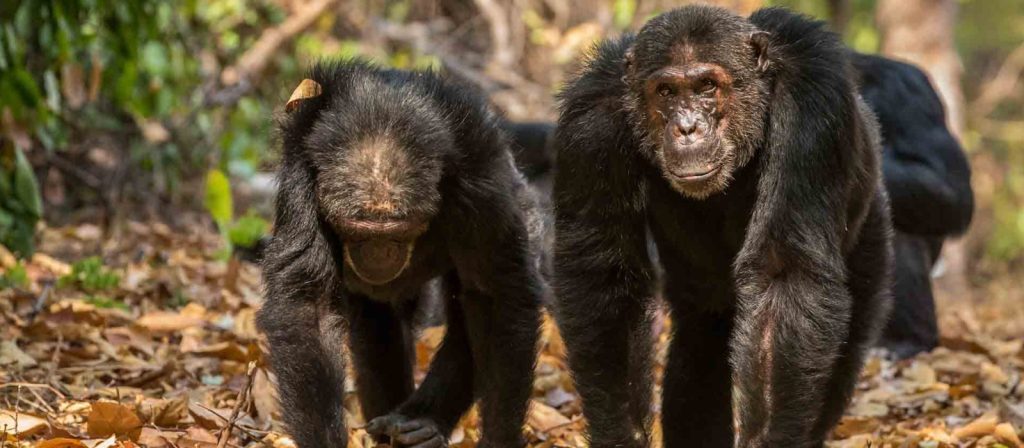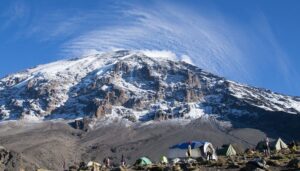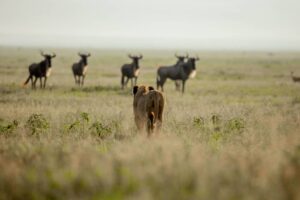Quick Facts
About Maasai Mara National Reserve
Peak Time
June - October
Best Time To Go
Year-round, but the Great Migration happens from July to October
Famous For
The Great Migration, Big Five, and stunning landscapes
Home Of
Over 95 mammal species, 570+ bird species, and rich Maasai culture
Overview
Maasai Mara National Reserve is one of the most famous wildlife destinations in Africa, located in southwestern Kenya. Spanning over 1,500 square kilometers, it forms part of the Mara-Serengeti ecosystem and is home to some of the most spectacular wildlife encounters in the world. The reserve is named after the Maasai people, who have lived here for centuries, coexisting with the rich biodiversity.
Renowned for the Great Migration, where over two million wildebeest, zebras, and gazelles cross the Mara River in search of fresh grazing lands, the reserve is a top destination for photographers, nature lovers, and adventure seekers. Visitors can experience the magic of the African wilderness while enjoying game drives, cultural interactions, and luxury tented safari camps.

Wildlife
Maasai Mara is home to the Big Five (lion, elephant, leopard, buffalo, and rhino) along with an array of other wildlife species. The expansive savannahs and riverine forests support abundant populations of cheetahs, hyenas, jackals, hippos, and crocodiles. Bird enthusiasts will also enjoy sightings of over 570 bird species, including the iconic African fish eagle, lilac-breasted roller, and secretary bird.
The Great Migration
The Great Migration is one of the Seven Natural Wonders of Africa, attracting travelers from around the globe. Each year, over two million wildebeest, alongside thousands of zebras and gazelles, traverse the Serengeti-Mara ecosystem in a perilous journey across crocodile-infested rivers. Witnessing this breathtaking spectacle is a once-in-a-lifetime experience, with predators like lions, cheetahs, and hyenas capitalizing on the chaos.
Scenic Landscapes
Maasai Mara is defined by its rolling savannahs, acacia woodlands, and dramatic escarpments. The landscapes stretch as far as the eye can see, offering a true sense of Africa’s untamed wilderness. Key highlights include:
- The Mara River – a lifeline for migrating herds and home to massive crocodiles.
- Olololo Escarpment – a stunning viewpoint offering panoramic vistas of the reserve.
- Mara Triangle – a less crowded yet wildlife-rich section of the park
Activities
Maasai Mara offers a diverse range of activities for an immersive safari experience:
- Game Drives: Enjoy morning and evening drives led by expert guides.
- Hot Air Balloon Safaris: Experience the Mara from above at sunrise.
- Walking Safaris: Trek through the wilderness with Maasai guides.
- Maasai Cultural Visits: Learn about the traditions and lifestyle of the Maasai people.
- Photographic Safaris: Capture the beauty of Africa’s wildlife and landscapes.

Inspired by What You See? Let’s Bring Your Journey to Life!
Best Time to Visit
The best time to visit Mahale Mountains National Park is during the dry season, from June to October, when chimpanzee tracking is easiest, and the weather is ideal for outdoor activities. During this time, the trails are dry, and the chimpanzees tend to stay closer to the base of the mountains, making them easier to find. The wet season (November to May) brings lush greenery to the park and is a great time for bird watching, but the trails can become slippery, and the chimps often move higher into the mountains.
Accommodation
Due to its remote location, accommodation options in Mahale Mountains National Park are limited but offer an intimate, immersive experience. Most visitors stay in luxury tented camps or eco-lodges nestled along the shores of Lake Tanganyika, providing breathtaking views and easy access to the park. These accommodations offer a blend of comfort and adventure, with opportunities for chimpanzee tracking, hiking, and lake-based activities right at your doorstep.
Why Visit Maasai Mara National Reserve
Maasai Mara is one of the most iconic safari destinations in the world. Its abundant wildlife, stunning scenery, and cultural richness make it a must-visit location for travelers seeking an authentic African safari experience.




